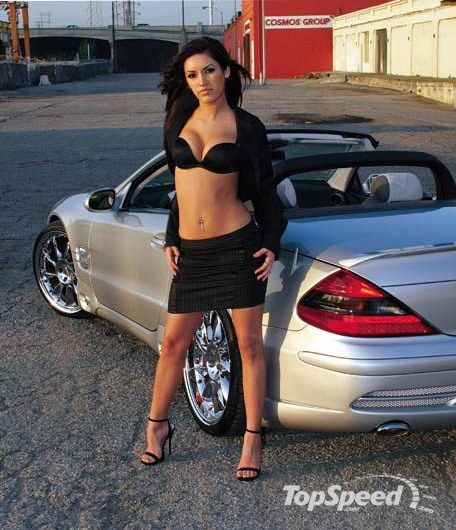
Saab unveiled today the 9-X BioHybrid Concept, a preview version of the 2010 9-1, a model that will come to compete with models like BMW 1-Series. The 9-X BioHybrid evolves visual design themes from the award-winning Aero X coupe (shown Geneva 2006) and multi-dimensional 9X (shown Frankfurt 2001) concepts.
The 9-X BioHybrid Concept is powered by a 1.4-liter BioPower turbo engine, optimized for bioethanol (E85) fuel that delivers 200 hp. The 9-X BioHybrid explores the potential for using active aerodynamics to reduce drag – and fuel consumption – at cruising speeds. Above 70 kph (43 mph), the upper and lower bodywork is reshaped as the roof spoiler automatically extends to further lengthen the roof line and an underbody diffuser is deployed from the bottom of the rear bumper.
At the front, the deep grille, that concave styling line in the hood pressing and the ‘wraparound’ windshield are inspired by the award-winning Aero X concept shown at Geneva two years ago. The 9-X BioHybrid cuts a unique silhouette in compact car design. The longer roof line and ‘sawn off’ rear styling contributes to a better aerodynamic performance and provides more interior room than a conventional compact hatchback with a sloping screen and rear trunk lid deck.
Press releaseThe Saab 9-X BioHybrid concept demonstrates how Saab design values could be expressed in a future compact car format. It is focused on youthful customers, typical of the premium compact car segment. They seek and value progressive product design and efficient performance, with easy access to high-tech communications, as well as a sporty driving experience.
The bold execution of the 9-X BioHybrid evolves visual design themes from the award-winning Aero X coupe (shown Geneva 2006) and multi-dimensional 9X (shown Frankfurt 2001) concepts. Inside, it showcases an entirely new expression of Saab’s driver-focused cockpit design, as well as innovative seamless in-car connectivity for all personal nomadic devices. Smart rear functionality features a cargo deck with an automatic sliding floor and a ‘friction’ loading system.
The small yet powerful 200 hp (147 kW), 1.4-liter BioPower turbo engine, optimized for bioethanol (E85) fuel, is backed by GM’s next-generation hybrid system (see separate release for details) for efficient, environmentally-responsible performance.
“This concept redefines conventional compact car design.” says Jan Åke Jonsson, Saab’s Managing Director. “It shows how progressive Saab design can be combined with smart features and responsible, rightsizing performance that is in tune with the expectations of younger buyers in this segment.”
Clean Scandinavian DesignWith minimal bodywork overhangs, a wide stance and extended roof line, the three-door Saab 9-X BioHybrid brings a dynamic, new dimension to conventional ‘hatchback’ looks. The single window graphic, smooth ‘fuselage’ bodywork – without any visible handles or even door mirrors – and ‘ice block’ lighting themes draw on roots in Scandinavian design and Saab’s aircraft heritage.
At the front, the deep grille, that concave styling line in the hood pressing and the ‘wraparound’ windshield are inspired by the award-winning Aero X concept shown at Geneva two years ago. The car’s overall proportions and rear functionality are developed from the 9X multi-role concept shown at Frankfurt in 2001.
The 9-X BioHybrid cuts a unique silhouette in compact car design. The longer roof line and ‘sawn off’ rear styling contributes to a better aerodynamic performance and provides more interior room than a conventional compact hatchback with a sloping screen and rear trunk lid deck.
Touch-sensitive, keyless entry, eliminates the need for exterior door handles. And the use of small, retracting rear-view camera pods - instead of larger door mirrors - further contributes to the clean ‘fuselage’ effect, while also reducing aerodynamic drag at speed.
A large solar cell in the glass roof takes advantage of free energy from the sun by adding charge to the hybrid battery pack while the vehicle is parked and also when it is being driven.
At night, driving comfort is improved by automatic switching between high and dipped headlamps beams. A front -mounted camera monitors light sources on the road ahead and small shutters automatically ‘hood’ the high beam when on-coming traffic is approaching.
Active AerodynamicsEchoing Saab’s roots in aircraft design, the 9-X BioHybrid explores the potential for using active aerodynamics to reduce drag – and fuel consumption – at cruising speeds. Above 70 kph (43 mph), the upper and lower bodywork is reshaped as the roof spoiler automatically extends to further lengthen the roof line and an underbody diffuser is deployed from the bottom of the rear bumper.
During heavy braking from over 100 kph (62 mph), the rear spoiler is raised, adding downforce over the rear axle. This action also reveals a reflector that increases the visibility of the brake light underneath, as a further warning of heavy braking.
Mould-breaking InteriorInnovative design is even more dramatic inside the four-seater cabin, upholstered in white leather at the front and black. Here, the 9-X BioHybrid introduces an entirely new execution of Saab’s driver-focused cockpit design. The central, floor-mounted console, with its angled controls and displays, is now eliminated. Instead, the driver- focused layout incorporates a main instrument panel that sweeps out from the top of the door moulding, arching across the driver. Only shared climate control and interior lighting functions remain in a small, central touch-sensitive panel.
The driver information zone is a flat, arc-shaped multi-layered acrylic surface, within which a row of five displays screens is embedded and illuminated in green 3-D graphics. This includes an ‘infotainment’ screen and control panel in the driver’s door moulding. Another ‘infotainment’ screen showing, for example, navigation with more in-depth information if selected, is located across the cabin for the front passenger. All displays and menus can be operated, adapted or minimized by the driver via controls on the fixed hub and rim of the steering wheel. The rear view camera screens are conveniently located above the main displays within the driver’s eye line.
White ambient lighting of the cabin is taken a step further by a selectable level of suffused illumination, varying in intensity from a bright, cold to warm and soft. This is a feature that could even be programmed, for example, to reflect the changing seasons
Seamless CommunicationThe potential for seamless wireless connectivity (Bluetooth or WiFi) with one or multiple nomadic devices (mobile phones, PDAs etc) is demonstrated by Saab’s co-operation with Sony Ericsson in developing an interface for streaming data, entertainment and satellite navigation functions for in-car display and use. The interface allows the simultaneous use of devices, such as a phone and MP3 player, when passengers are in the car.
The functions of the nomadic device are controlled by a screen in the car, for example, while it is kept in the user’s pocket. The smarter the device, the more functions in the car. Depending on the type of device, it can upload its own displays, as well as lock /unlock the car and even remotely change in-car pre-sets. It is all part of the concept’s vision in appealing to younger buyers who expect easy, on-the-move access to multi-media.
Smart Load-carryingAt the rear, the cargo deck features an electrically-powered slide-out floor, which is activated when the bottom half of the tailgate drops down over the rear bumper. The top section, hinged from the roof, can be opened separately so that smaller items may be dropped inside easily.
The entire floor area, and the back of the folding rear seats, is covered by ‘high friction’ rubber carpeting. When the tailgate opens, aluminum bars in the floor are automatically raised just above the level of the high friction surface, making it easy to slide items inside. When the tailgate is closed, the bars are lowered to allow the high friction surface to ‘grip’ items and hold them securely in place.
The ‘default’ setting for the rear seats is the folded down position, reflecting the fact that the youthful target buyers for such a car will use its load-carrying capability more often than they need to accommodate rear passengers.
VisionThe 9-X BioHybrid has been created by a team under Anthony Lo, Director of Advanced Design at General Motors Europe, working in co-operation with the Saab Brand Center in Sweden. .
“This car is about efficiency in design and performance,” he says. “We have taken exterior themes from our previous concept work, such as the clean surfaces and lighting treatments, and tuned them for a compact format.
“Inside the car, the new driver-focused design theme and the easy, seamless connectivity are both features we will be developing in future.”












































